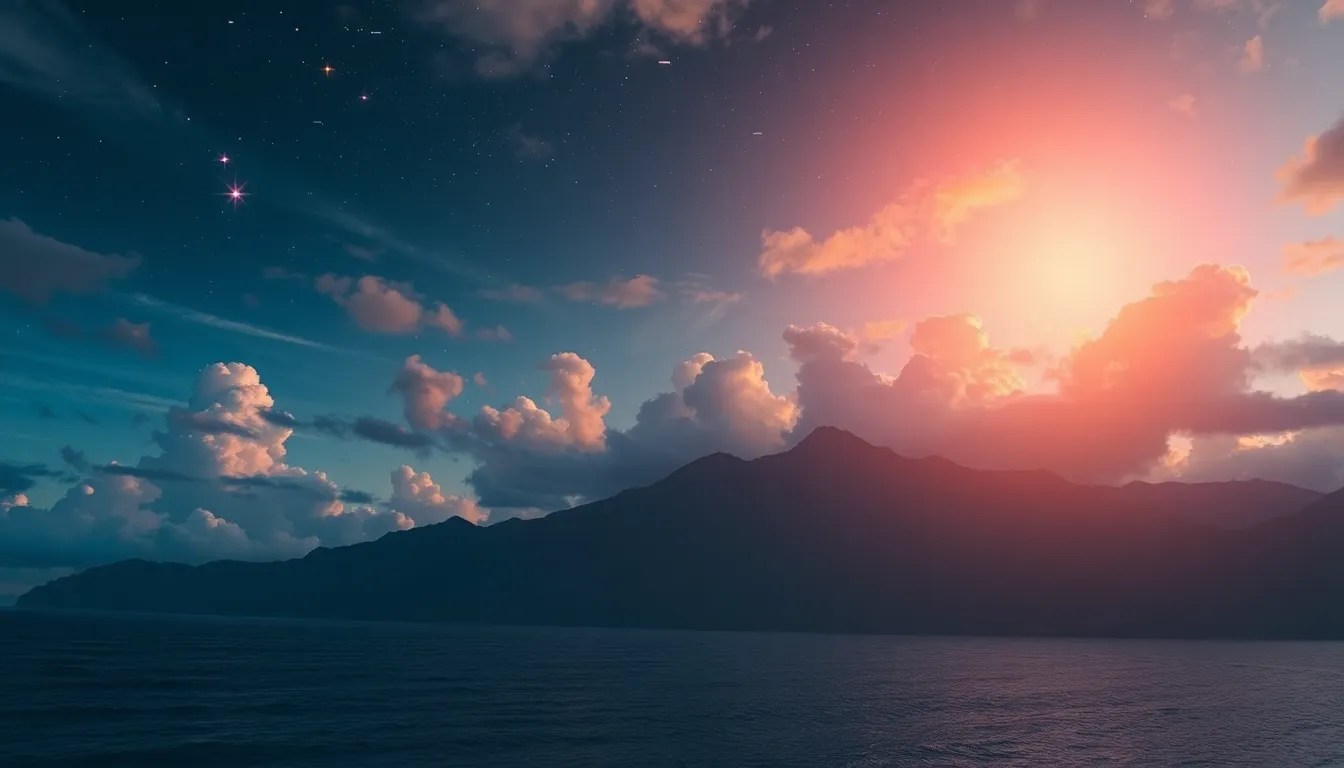From Earth to Sky: The Interconnectedness of Polynesian Myths and the Cosmos
I. Introduction
Polynesian mythology is a rich tapestry of stories, beliefs, and traditions that reflect the unique cultural heritage of the Pacific Islands. This mythology serves not only as a means of understanding the world but also as a way to connect with the cosmos. In Polynesian thought, the universe is a vast and interconnected system where the earth and sky are deeply intertwined. Myths explaining the creation of the world, the movements of celestial bodies, and the nature of spiritual power all paint a picture of a reality where the divine and the earthly coexist.
II. The Creation Myths: Earth and Sky
Central to Polynesian mythology are the creation myths that detail how the world came into being. Different island cultures share similar themes, often involving the separation of earth and sky. One of the most significant narratives features Rangi, the Sky Father, and Papa, the Earth Mother. According to the myth, Rangi and Papa were once locked in a close embrace, shrouding the world in darkness. Their children, the gods, grew tired of this confinement and conspired to separate their parents.
The creation process is described as follows:
- The gods created the first light by pushing Rangi away from Papa.
- This separation allowed the creation of land, vegetation, and life.
- The resulting world was filled with beauty and diversity, symbolizing the harmony between earth and sky.
III. Celestial Bodies in Polynesian Mythology
In Polynesian culture, celestial bodies play a crucial role in navigation, timekeeping, and agriculture. The stars, sun, and moon guide seafarers across the vast Pacific Ocean and are integral to daily life. The Polynesians were expert navigators who relied on their knowledge of the night sky to find their way across the open sea.
Key celestial deities include:
These celestial beings are not only revered but are also seen as integral to the rhythm of life and the cosmos.
IV. The Concept of Mana: Cosmic Energy and Spiritual Power
In Polynesian culture, the concept of mana represents spiritual power and authority. Mana is believed to be a vital force that flows through all living things, connecting them to the cosmos. It can be acquired, lost, or transferred, and is deeply linked to one’s lineage, actions, and the natural world.
The significance of mana includes:
- It is a source of strength for leaders and warriors.
- It can be harnessed through rituals, prayers, and connection with ancestors.
- Mana reinforces the relationship between humans and the divine, blurring the lines between earthly existence and celestial influences.
V. Mythological Heroes and Their Cosmic Journeys
Polynesian mythology is replete with tales of demigods and heroes who embark on epic adventures that often involve celestial challenges. One of the most celebrated figures is Maui, known for his cunning and bravery. Maui’s adventures include:
- Fishing up islands from the ocean.
- Slowing down the sun to lengthen the day.
- Challenging the gods and bringing fire to humanity.
These journeys are not merely physical; they symbolize the struggle between humans and cosmic forces, reflecting the interconnectedness of earth and sky. Maui’s exploits reveal the Polynesian belief that humans can influence the cosmos through their actions and decisions.
VI. The Role of Nature as a Reflection of the Cosmos
The natural world in Polynesian mythology embodies cosmic principles, serving as a reflection of the universe’s order and harmony. Elements such as the ocean, mountains, and flora are considered to have spiritual significance and are often personified in myths.
For instance:
- The ocean represents the vastness of the cosmos and the unknown.
- Mountains are seen as sacred places where the earth touches the sky.
- Flora and fauna are often depicted as messengers of the gods, connecting the earthly realm with the celestial.
This interplay highlights how environmental phenomena are interwoven with mythological narratives, reinforcing the belief that humans are part of a greater cosmic order.
VII. Modern Interpretations and Cultural Preservation
In contemporary society, Polynesian myths continue to hold relevance, serving as a source of cultural identity and pride. Efforts to preserve these stories include educational programs, performances, and the incorporation of mythology into art and literature.
Modern interpretations often seek to adapt ancient narratives to address contemporary issues, such as environmental conservation and community resilience, demonstrating their enduring legacy.
VIII. Conclusion
The interconnectedness of earth and sky in Polynesian mythology illustrates a profound understanding of the universe and human existence. Through creation myths, celestial bodies, the concept of mana, heroic journeys, and the natural world’s reflections, Polynesian narratives reveal a worldview where everything is linked.
These myths not only offer insights into the cosmos but also serve as a reminder of the enduring human quest for meaning and connection in the vastness of existence.



